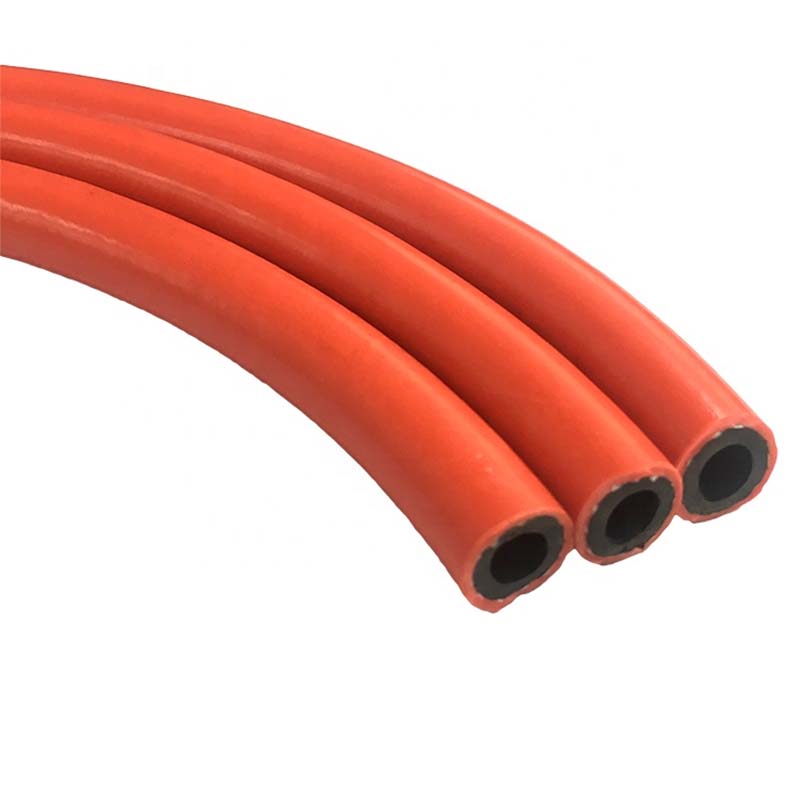Durable High Pressure Lay Flat Hose for Efficient Water Transfer and Irrigation Applications
Understanding High-Pressure Lay Flat Hoses A Comprehensive Guide
High-pressure lay flat hoses have become an essential component in various industries, including agriculture, construction, mining, and firefighting. These hoses are engineered to handle significant pressure while maintaining flexibility and ease of use. This article explores the features, applications, and benefits of high-pressure lay flat hoses, highlighting their importance in contemporary operations.
What Are High-Pressure Lay Flat Hoses?
High-pressure lay flat hoses are specifically designed to transport liquids and gases under increased pressure conditions. The lay flat design allows the hose to be stored easily and transported to different locations without occupying much space. Typically made from durable materials such as nylon, polyester, or PVC, these hoses are reinforced to withstand the stresses of high-pressure applications. The flat design means that when not in use, the hose can be folded compactly, making it convenient for storage.
Key Features
1. High Burst Pressure One of the most significant features of high-pressure lay flat hoses is their ability to handle extreme pressure levels, often ranging from 100 PSI to over 300 PSI depending on the construction and materials used.
2. Durability These hoses are constructed to resist abrasions, tears, and chemical damage, which makes them suitable for rugged environments. The materials chosen for high-pressure lay flat hoses can tolerate a wide range of temperatures, ensuring reliability in diverse conditions.
3. Lightweight and Flexible Despite their strength, high-pressure lay flat hoses remain lightweight and easy to maneuver. Their flexibility allows them to navigate around obstacles without kinking or damaging the hose itself.
4. Easy Storage and Deployment The flat profile of these hoses makes them easy to store on reels or in containment units. Additionally, the quick deployment feature enables rapid setup, which is particularly beneficial in emergency situations.
Applications
High-pressure lay flat hoses serve a multitude of purposes across various industries
- Agriculture Used for irrigation systems and transferring fertilizers and pesticides, these hoses facilitate efficient water management, essential for modern farming practices.
high pressure lay flat hose

- Construction In construction sites, they are used for dewatering applications, transporting water to and from sites, and assisting in concrete pumping and mixing processes.
- Firefighting High-pressure lay flat hoses are vital in firefighting operations, allowing firefighters to transport water over long distances quickly and efficiently.
- Mining In mining operations, these hoses are employed to move dewatering effluent and other liquids, ensuring safe and efficient material handling.
Advantages
The use of high-pressure lay flat hoses offers several advantages
1. Cost-Effective By maximizing efficiency in fluid transfer and reducing setup time, these hoses ultimately lower operational costs.
2. Enhanced Safety Their robust design minimizes the risk of leaks or bursts, ensuring safe handling and transport of hazardous materials.
3. Versatility They can be used in a diverse range of applications, adapted for varying environments, and can transport various liquids, including water, slurries, and even certain chemicals.
4. Environmental Benefits Their efficiency reduces the energy required for pumping operations, leading to lower environmental impact.
Conclusion
High-pressure lay flat hoses are indispensable tools across numerous industries, offering functionality, safety, and reliability. Their unique design allows for easy transport and storage while providing the strength necessary for demanding applications. As industries continue to evolve, the versatility and dependability of high-pressure lay flat hoses will undoubtedly play a critical role in enhancing operational efficiency and safety.
Incorporating high-pressure lay flat hoses into operational frameworks not only simplifies processes but also advances sustainability efforts through efficient resource management. As technology continues to improve, these hoses are set to evolve, further meeting the growing demands of various sectors.
-
Welded Wire Mesh Panel: Durable, Versatile, and AffordableNewsJul.28,2025
-
Top Quality Oxy Acetylene Hoses for Sale Fit for Welding DemandsNewsJul.28,2025
-
The Future of Pneumatic Air Tubes in IndustryNewsJul.28,2025
-
Superior and Reliable LPG Hose Pipe Solutions for Every NeedNewsJul.28,2025
-
Exceptionally Durable and Versatile Premium Braided PVC TubingNewsJul.28,2025
-
Best Adapters for Connecting Garden Hose to PVC Pipe ConnectionsNewsJul.28,2025














